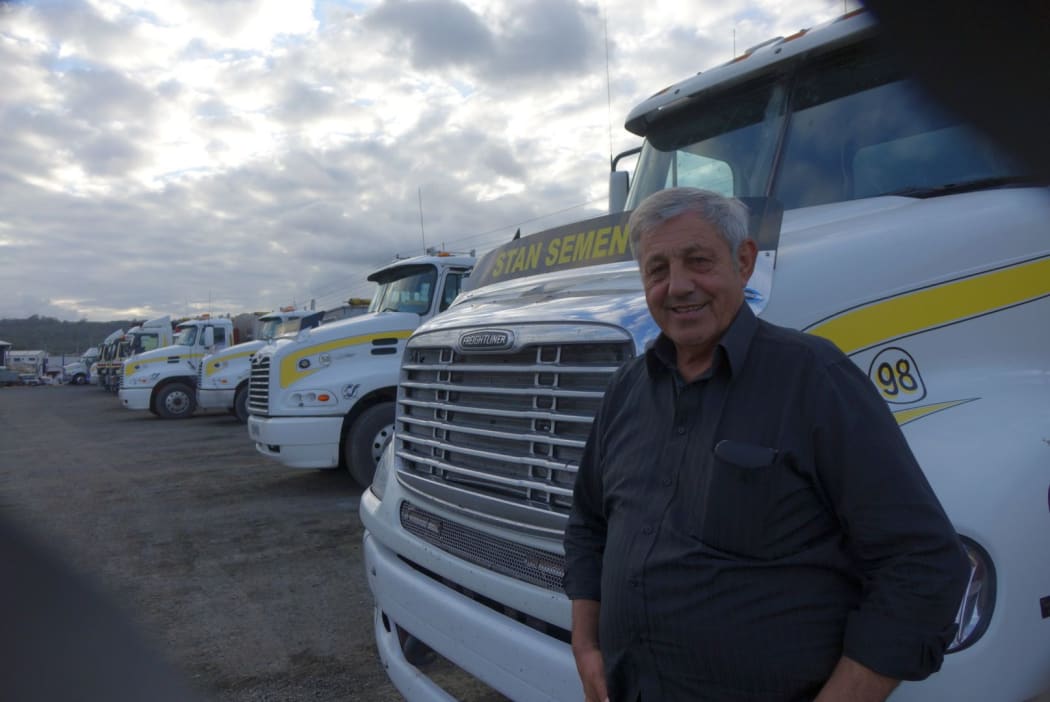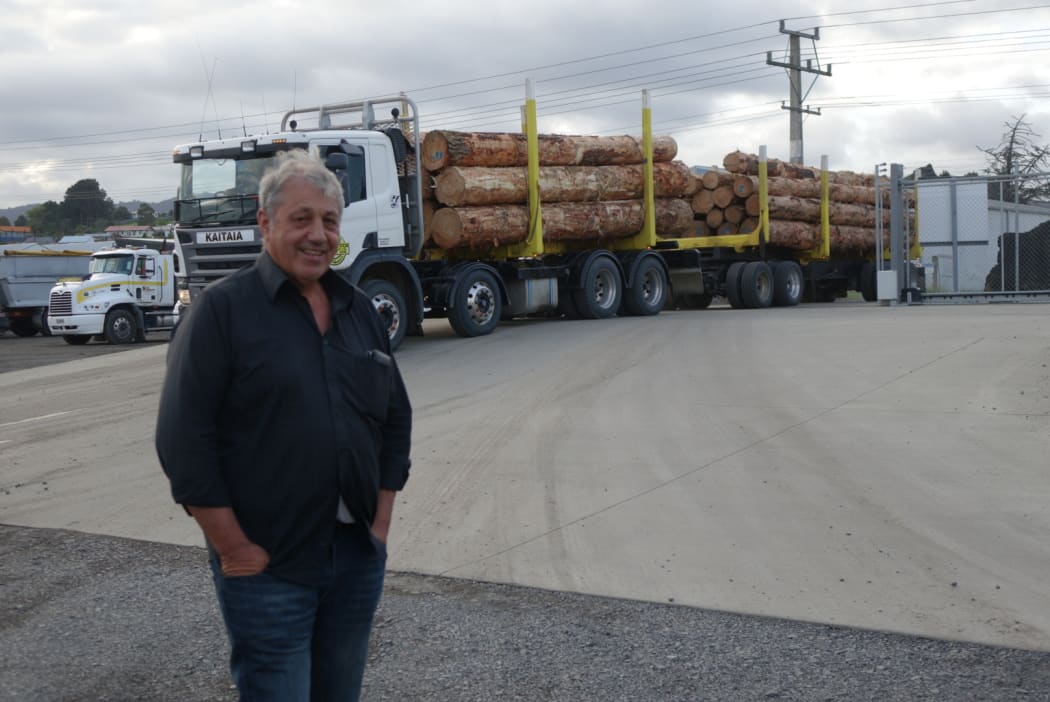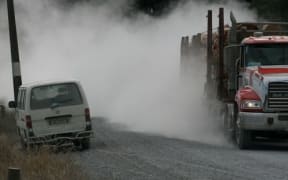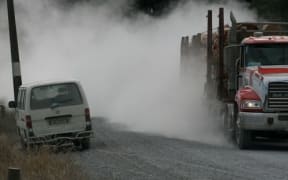A spate of log truck crashes in Northland is causing alarm in the community and the road freight industry.

Stan Semenoff. Photo: RNZ / Lois Williams
Since last Monday, three log truck and trailer units have come to grief on bends, according to the police, with no other vehicles involved.
Since Northland forests planted 30 years ago began reaching harvest age, there have been regular reports of log trucks rolling with sometimes fatal consequences.
But three in a week spilling their logs across the highways is thought to be a record.
One of the region's most experienced road transport operators Stan Semenoff said there was only one reason - drivers were going too fast.
Mr Semenoff, a former Whangarei mayor, owns the region's biggest trucking firm Stan Semenoff Transport, said such crashes were usually avoidable.
"A log truck doesn't tip over for the sake of it," he said. "It's speed. Speed and a lack of attention to the road causes most of those single accidents where no cars are involved."
An Aztec Forestry Transport spokesperson said Northland's atrocious roads were part of the problem.
Its Whangarei manager Ian Newey said narrow, winding, and often rutted roads were unforgiving of even small errors of judgement.
"With the lack of road width and design, there is a very small margin for error,' he said.
"A slight bit of lack of concentration and it can be all over. It doesn't take much when the margin for error is so small."
Road Transport Forum chief executive Ken Shirley said the Northland roads were difficult, but ultimately there was a responsibility for the drivers to drive to the conditions.
However, there was also a responsibility for the transport operator to make sure the drivers were properly trained, he said.
"We actually have a seminar in rollover preventions, we're running this with NZTA, it's a very serious matter and the industry is taking it very seriously.
Mr Semenoff said an experienced log truck driver would take a bend at 10km/h lower than road signs recommended, to be on the safe side.

Stan Stemenoff and some of his fleet. Photo: RNZ / Lois Williams
But he said growth in the industry meant it was becoming harder to find experienced New Zealand drivers and he was now bringing them in from Fiji and the Philippines.
Mr Semenoff said many had gained their experience driving for the military in places like Afghanistan, and they were steady and hard-working.
"We've been running 28 to 30 drivers short for the last eleven to twelve months," he said. "And it got painful, so we've gone outside [New Zealand].
"I don't like it, but on the same token we're still taking people in from polytech or Salvation Army training courses ... any locals who come in and are willing to give it a go. But they're not there in numbers."
Of those young drivers fresh out of their training courses, Mr Semenoff said about 12 percent would fail the compulsory pre-work drug test.
He had been forced to let others go because they were over-confident and prone to dinging fenders, or worse.
"We have put people off - and then they've joined other companies." he said.
"And they've just gone on and good on them, but they'll probably get caught with drug-testing there too."
Times they are a-changin'
Mr Semenoff said the current training system for drivers was worlds away from how he learned, riding in a truck with his father in Hokianga in the 1950s, and he was not sure it was better.
By the age of 10, he was driving an old Bedford for his Dad - doing freight deliveries, his feet barely reaching the pedals.
And according to him - he has never once rolled a truck.
"The old man used to say to me, 'make sure you throw some dirty water from a puddle over the windscreen and give it a half wipe, so they can't see who you are."
"You'd get sconed if you tried something like that today, but that's how it was in the old days and they got away with it."
Log trucks are not the only ones having accidents in the north. On Tuesday a cement truck was forced off the road south of Whangarei by a car whose driver botched a passing manoeuvre.
Roadsafe Northland said the rollovers in particular were frightening, but car drivers could reduce their risk by staying six seconds behind a truck, keeping the truck driver's wing mirror in sight and being extremely careful with overtaking.
"Passing means not getting past no matter what and cutting in quickly in front of them. Because the truck cannot slow down and respond quickly if you cut that distance too short," said education manager Gillian Archer.
Fewer steps for big-rig licence tests
Meanwhile, the national body for truckers welcomed a proposal to make it faster and cheaper to get a licence to drive the biggest vehicles.
Drivers must go through a system of four classes of licence before they can drive the heaviest truck and trailer units.
The Transport Ministry said that was too slow, and it suggested removing one category as well as the six-month learner period for the bigger vehicles.
But drivers would have to sit a tougher practical test.
Road Transport Forum had been lobbying for a change for 15 years, Mr Shirley said.
"What's happened is over the years it's gotten more and more complicated, with unnecessary steps there, and it's more expensive and it's actually a barrier to recruiting drivers.
Submissions on the proposals are open until 2 June.




